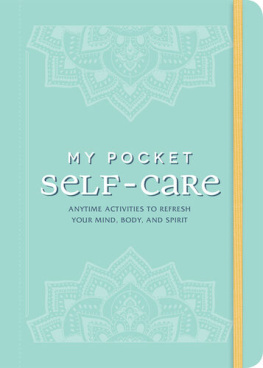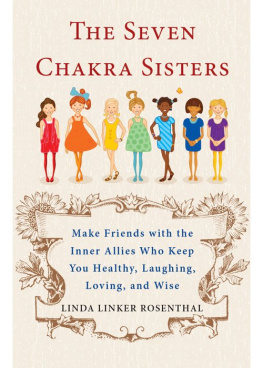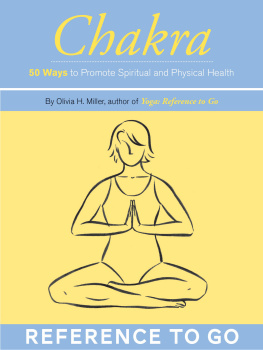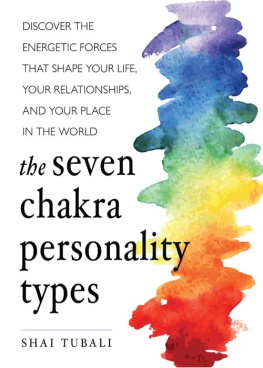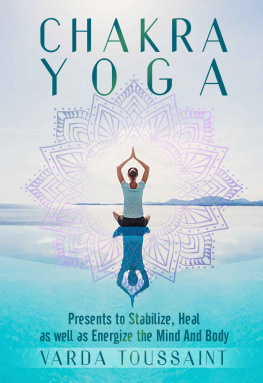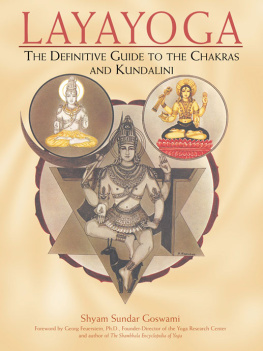Enlivening the Chakra of the Heart
The Fundamental Spiritual Exercises of
Rudolf Steiner
Florin Lowndes
SOPHIA BOOKS
Rudolf Steiner Press
Translated by Matthew Barton
Sophia Books
Rudolf Steiner Press
Hillside House, The Square
Forest Row, East Sussex
RH18 5ES
First Published by Sophia Books 2012
(Sophia Books is an imprint of Rudolf Steiner Press)
Originally published in German under the title
Die Belebung des Herzchakra, Ein Leitfaden zu den Nebenn Rudolf Steiners
by Verlag Freies Geistesleben, Stuttgart in 1996
Verlag Freies Geistesleben 1996
This translation Rudolf Steiner Press 1998
The moral right of the author has been asserted
under the Copyright, Designs and Patents Act, 1988
AU rights reserved. No part of this publication
may be reproduced, stored in a retrieval system, or
transmitted, in any form or by any means,
electronic, mechanical, photocopying, recording or
otherwise, without the prior permission of the
publishers
A catalogue record for this book is available from
the British Library
ISBN 978 1 85584 274 8
Cover by Andrew Morgan
Typeset by DP Photosetting, Aylesbury, Bucks.
Contents
Preface to the English Edition
For some time now, the nature and beneficial uses of the chakrasfor instance, awakening them through meditation or utilizing them for healinghave been the subject of widespread interest outside the New Age movement. Most, if not all, of this work has revived age-old methods of practice from the eastern esoteric tradition, especially those of yoga. However, a crucial, though perhaps not immediately apparent, question regarding these practices arises: do traditional methods, even though certainly appropriate and effective in the past, really meet the actual spiritual goals and the truly modern consciousness of the present?
Today any serious spiritual seeker interested in chakra work must ask this question in spite of the widespread acceptance of these traditional methodsor rather just because of it.
As first-hand experience demonstrates, traditional yoga practices can claim certain benefits; however, experience also shows that such older forms, even when modernized, are not fully consistent with a truly modern consciousness and subsequently are not, so to speak, at the cutting edge of the New Age. We can find an authentic modern way of working on the chakras in the exercises created by Rudolf Steiner (1861-1925), who, on the basis of a new kind of thinking process, recast certain yoga exercises in a form consistent with the modern and even future stages of (spiritual) development. In this way, he fulfilled a small and little known branch of yoga meditative practice, the Gayatri-Sadhana, the goal of which was prophetic, for it was focused on the reversed Kundalini (awakening the energy of all seven chakras from top down instead of the usual upward method) in a way that had become possible only at this much later historical time.
This book is concerned primarily with the group of exercises Rudolf Steiner created for enlivening the chakra of the heart, generally known as the subsidiary, supplementary or accompanying exercises. In it appear the contents of workshops on enlivening the heart chakra that I gave in the United States and Germany. I started off in these workshops with just a couple of handouts for the participants. These handout sheets gradually became more and more detailed and their number kept increasing, until they were eventually incorporated in a slim handout volume on the method I had developed for carrying out these exercises. Then I was encouraged by my publisher, well aware that a systematic approach to these was not available, to prepare an edition suitable for general publication. So, to the best of my ability, I refashioned and expanded the material from the living oral form it took in my workshops into its present written form. But this is not easily done, since any method of practice, being intended for individual practitioners, must invariably take on the very specific character best suited to the individual who applies it. Yet any method, when it is put into written form for a wide readership, inevitably assumes a more general and theoretical character and consequently may be perceived as a composition of rigid and dogmatic directives.
I always tried in my workshops to open myself to the questions and specific needs of individual participants, and thus to allow the workshop to emerge accordingly.
Therefore, I ask my readers to view these descriptions mainly as suggestions and stimuli, and to relate them to their own particular circumstances and actual capacities. The method described here will be of no use if it is applied in an abstract, lifeless, or dogmatic way. I conceived the present volume as a do it yourself kind of book for those who actually will do the exercises, rather than for those merely interested in piling up knowledge about themfor, as the saying goes, if you dont do what you know, you dont know it. Nothing would bring me greater satisfaction than if this book would help its readers to develop their own individual techniques.
What I have been able to share in the seminars is the result of decades of involvement both with the exercises themselves and with the spiritual principles underlying them, as well as with the laws at work in the way they are carried out. From the beginning of my work, I have been fortunate to have followed the clear and decisive direction pointed out to me by George ONeil (1906-88). In following this path, I have recognized that these exercises had been created by means of a new kind of thinking, one which ultimately offers us the only means of enlivening the heart chakra in a way thoroughly consistent with its essential function for our times. Rudolf Steiner designed these exercises for the enlivening of the heart chakra in such a way that, in doing them accordingly, we will gain access to the creative power of a truly modern thinking process, namely, thinking with the heart or heart-thinking. With this phrase, I do not mean the kind of feeling way of thinking that might first come to mind, but I use it rather as a technical term (hence the hyphenated spelling), the meaning of which will be explained and justified in the last part of this book. Suffice it to say, this is the kind of thinking that we desperately need to develop today, and by enlivening the heart chakra we will actually develop its proper physical organ. For the true organ for heart-thinking is indeed the heart (not the heart muscle per se but the rhythmical flow of blood regulated by it), just as its supersensible organ is the heart chakra.
This book was originally intended as the second of two about heart-thinking, the first of which was to describe its nature and outline and appropriate methodology. However, this book, the second of the series, now appears before the first, which will be published in Germany this year (1998). And yet this sequence, as it turns out, is appropriate: since these exercises are better known to many readers than the kind of thinking which underlies them, this book can serve as good preparation for the more basic one. It has been an important concern of mine to place the exercises described here into the context of todays widespread interest in the chakras, and thereby to show that Rudolf Steiners approach is truly modern and it can speak to a broad range of people. I hope, therefore, that this book can be of real value to those who are currently pursuing such meditative exercises from all sorts of different traditions, especially because it seeks to reveal the fundamentally new kind of thinking on which all truly modern spiritual work must be based today in order to become truly fruitful.
PART ONE:
THE CHAKRAS
The Method
Next page


